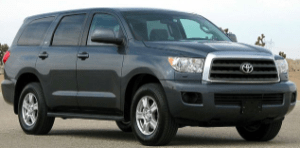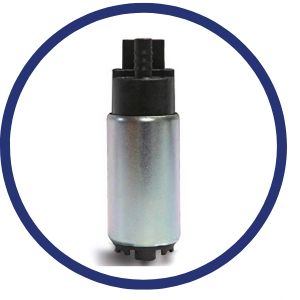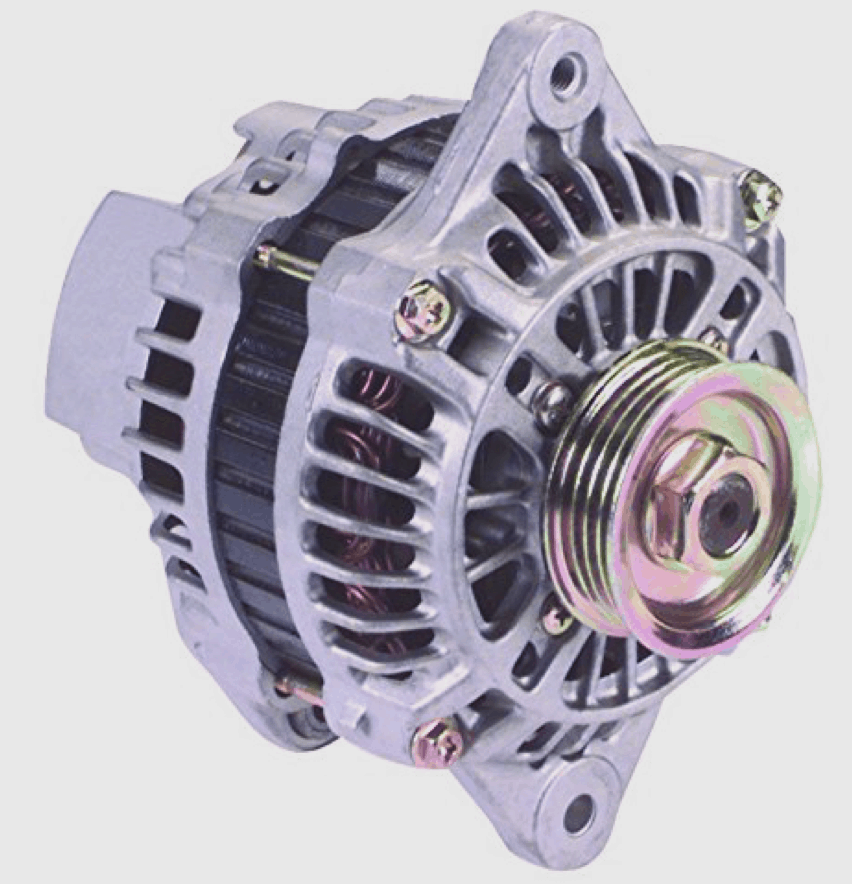If your Toyota Sequoia is shutting down while driving, it’s a real safety hazard. Vehicles are a lot harder to control without power brakes or steering.
Toyota Sequoia Shuts Down When Driving: Top Causes
Directly below is a list of the most common reasons why your Sequoia would randomly die while driving. It may help you in your diagnosis. But, before taking a look at anything, is the check engine light on? If it is, you’ll want to start with whatever trouble code you get from an OBD2 scanner.
Parts stores can scan it for you if you don’t have access to a scanner. But we don’t recommend driving anywhere until your Sequoia is fixed, since dying at the wrong time can cause a collision.
1. Out of Fuel
Your engine needs three things to run properly; air, fuel, and spark. If your engine is running fine and then it just suddenly dies, one of these three things was abruptly taken away. It’s usually fuel.
The most common reason that a vehicle shuts off when driving is a lack of fuel. The most likely cause is an empty fuel tank aided by a fuel gauge that’s not as accurate as it looks. Even if it says there is fuel in there, bang on the tank. If it makes a hollow sound, it’s probably empty.
2. Fuel Pump or Filter
Another common reason that your Sequoia may be starving for fuel is a bad fuel pump. The fuel pump is responsible for sending highly pressurized fuel to the fuel rails. The engine can die if the fuel pressure is not high enough to properly atomize the gasoline properly.
The fuel pump is often not monitored by the engine’s computer, which means it doesn’t activate the check engine light when you are trying to figure out why the vehicle it is randomly dying. This is the best place to start.
If the engine isn’t starting, turn the key to the on position and listen really carefully. You should hear a whining noise. That’s the fuel pump priming the fuel system. If you hear nothing, that is a strong indication that the fuel pump is bad. Since the fuel pump is in the tank, you may want to get a second set of ears so you can be absolutely sure you don’t hear it.
If you don’t hear it at all, you should manually check the fuel pressure at the fuel rails. If it is not as high as it should be you either have a bad fuel pump or fuel filter.
The fuel pump may be going out sporadically. This would mean that it’ll die on the road, and then fire back up again even a few seconds later.
3. Battery Cables
Check the battery cables to ensure that they are free of debris and are bolted to the battery posts properly. Follow the black ground cable to whatever it is connected to. Make sure that it is secure and there’s no corrosion or rust that could be keeping it from making a solid ground connection.
4. Engine to Chassis Ground
The engine needs a strong ground to the chassis in order for your Sequoia’s various electrical systems to work. If that cable is corroded, there could be problems such as misfiring, slow/no starts, or even the engine dying while driving. This is a common cause of many “gremlins”.
5. Bad Alternator
The alternator is responsible for charging the battery, and keeping your Sequoia running. If the alternator goes bad, the vehicle will run off of the power supply in the battery (which is there mostly for starting the vehicle and as a backup reserve).
Once the battery has been depleted, the ignition system will no longer be able to fire properly. You should see either a battery light or alternator light long before the engine dies. If you didn’t see it, it’s highly unlikely that the alternator or battery is at fault. If you did see the warning light, have the alternator and battery tested at the parts store. Replace them as needed.
6. Issue With Sensors
The crankshaft and camshaft sensors are responsible for telling the engine where the crank and cam are located in their 360° revolutions. If they stop reporting this data, even momentarily, the vehicle will not know when to fire the spark plugs and it’ll stop running.
The mass air flow sensor can also go bad. These sensors should trigger a trouble code if they have a problem through.
Conclusion: Toyota Sequoia Dying While Driving
In the absence of a check engine light, take a good hard look at the fuel pump. If that’s not the issue, we recommend having an experienced mechanic take a look at the problem. They’ll need to record the telemetry from the OBD2 system when the car does it again. Then, they’ll be able to determine which part of the vehicle has the problem. This is a DIY site, we hardly ever throw out the mechanic recommendation. This can be tough to track
If there’s anything that you would like to add that could help the next person with their Sequoia, please leave a comment below.




